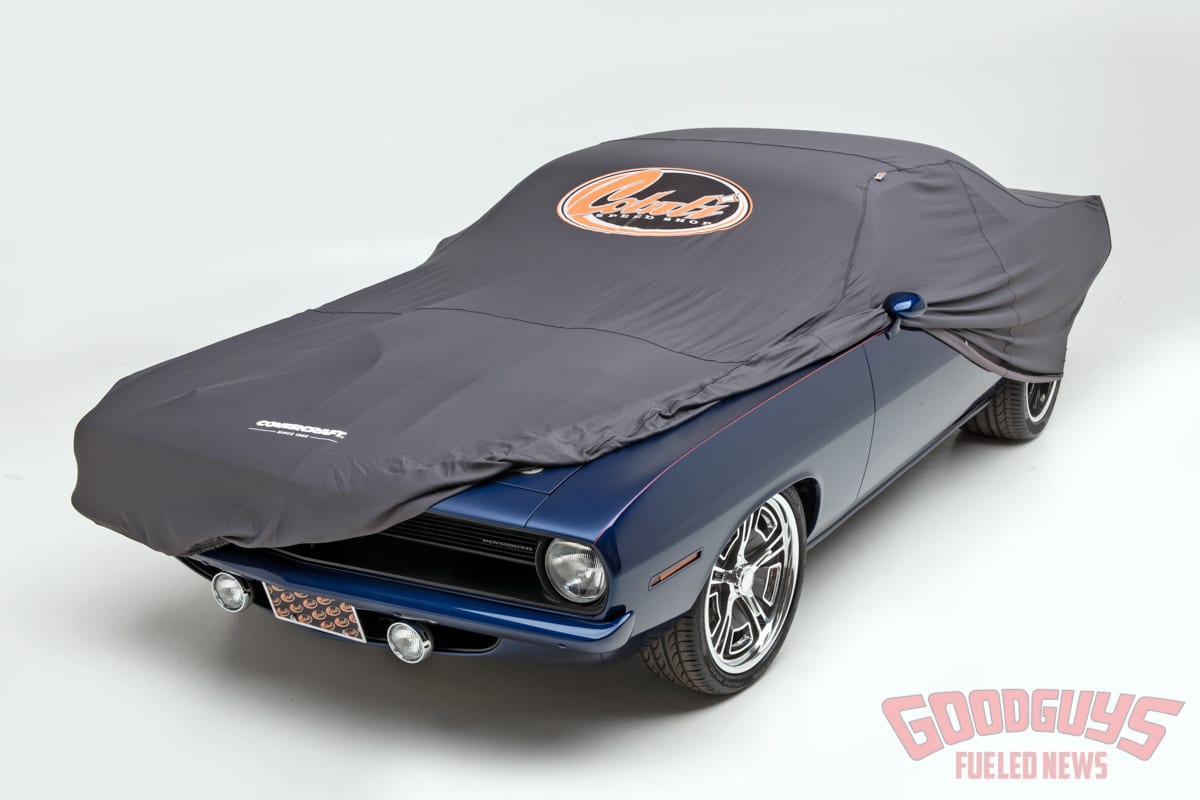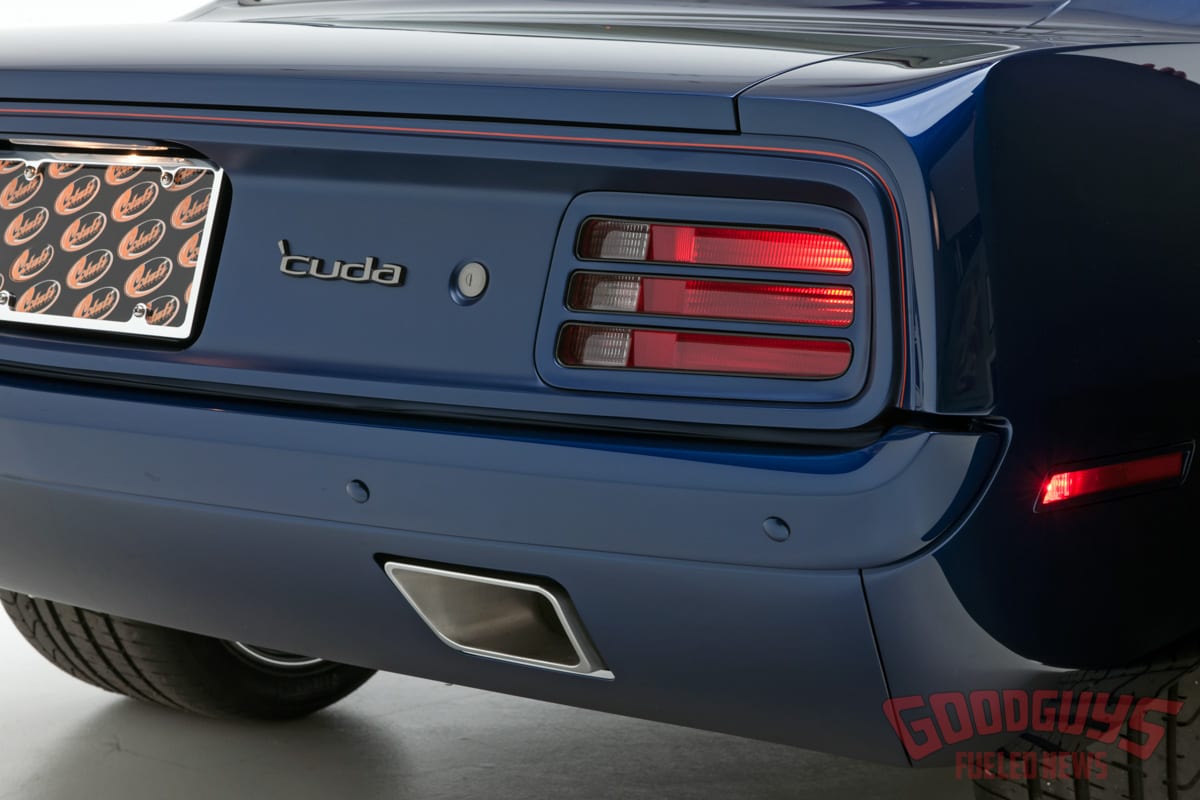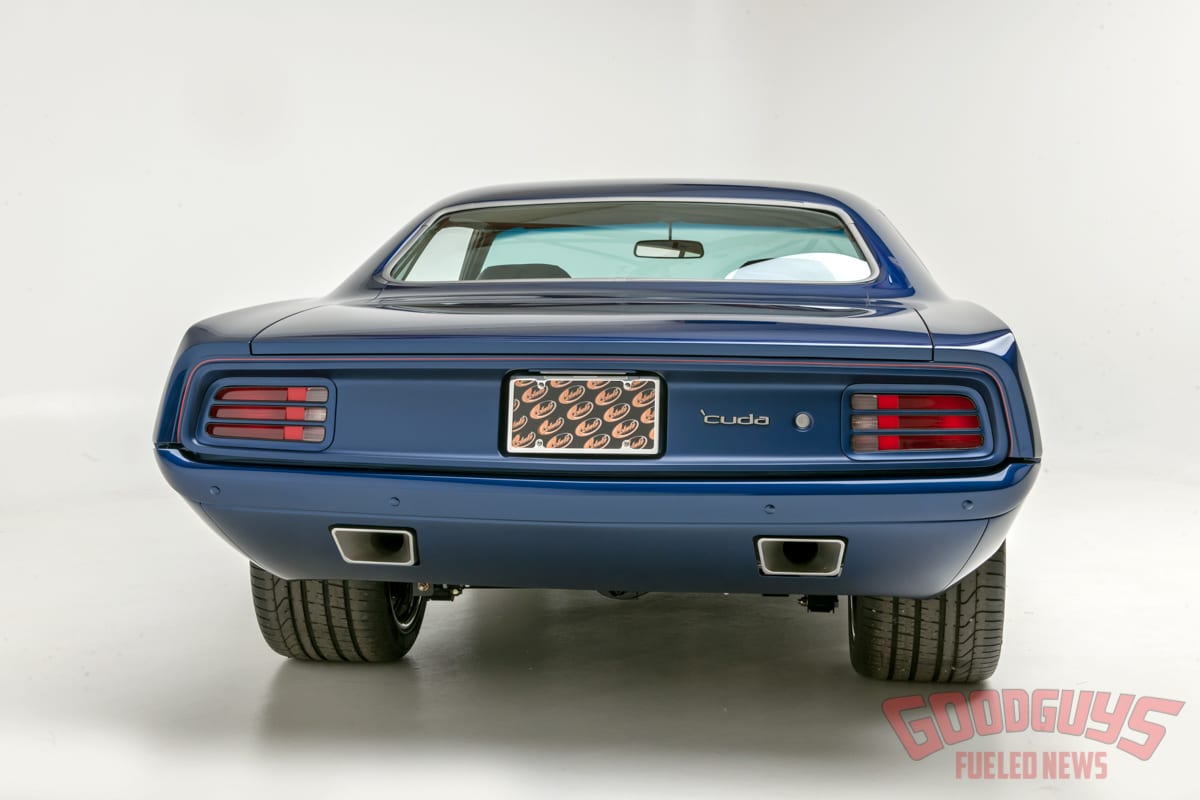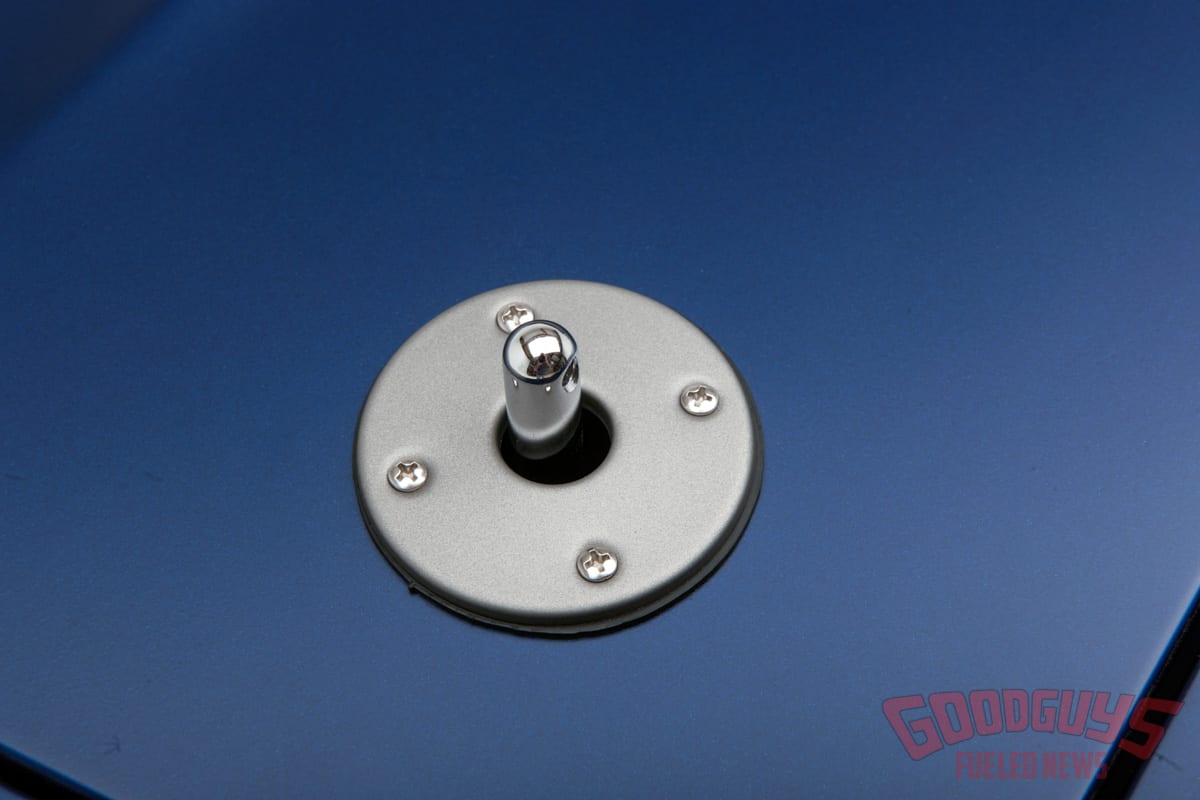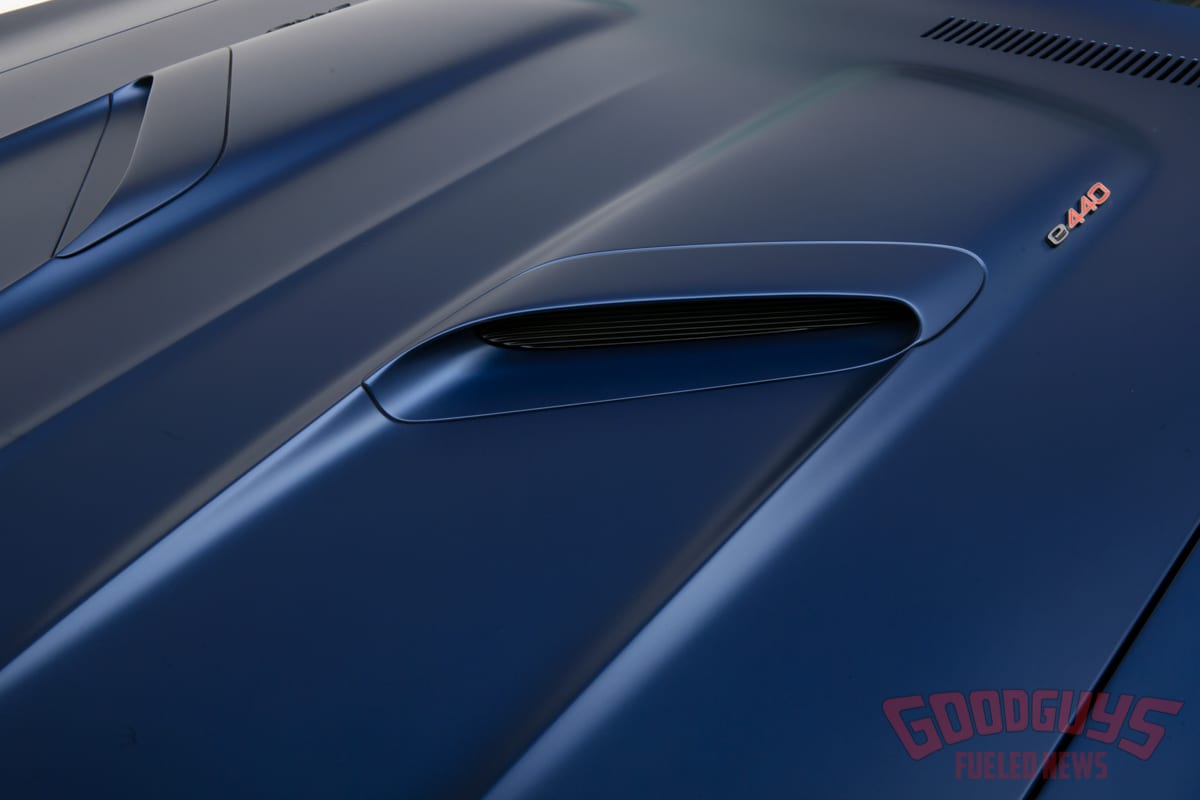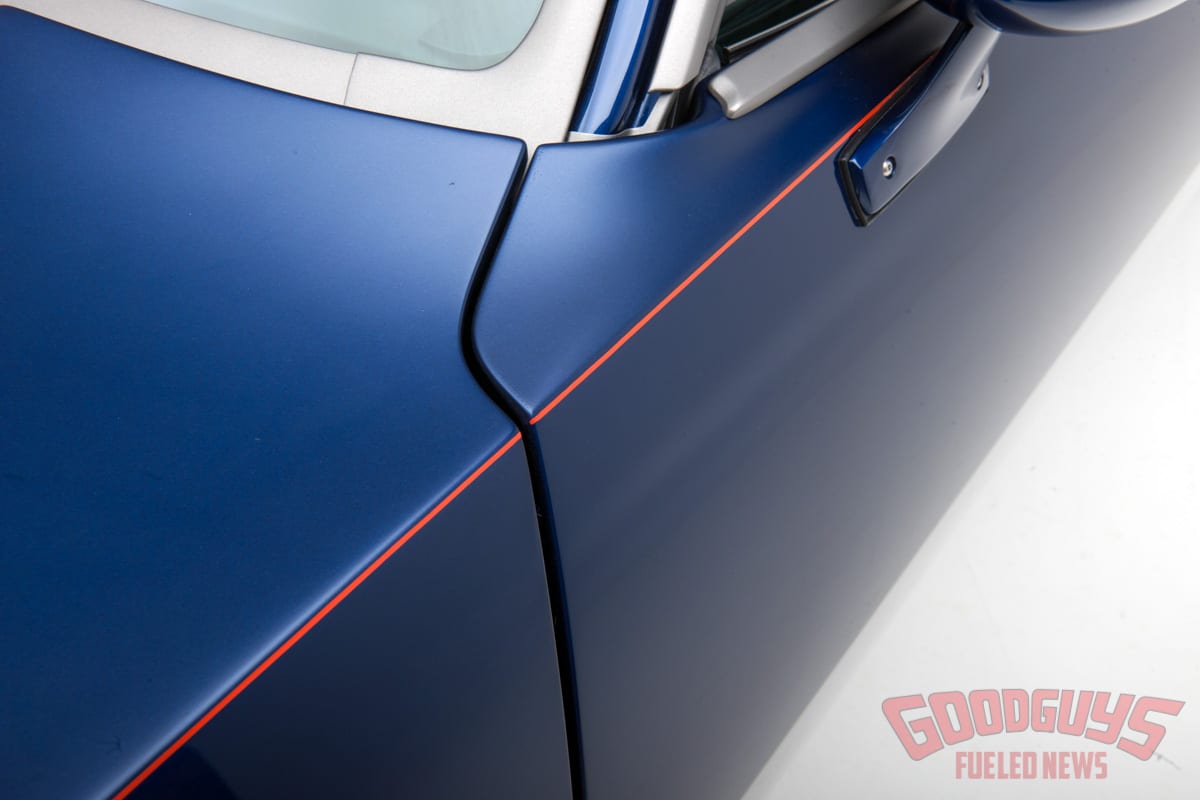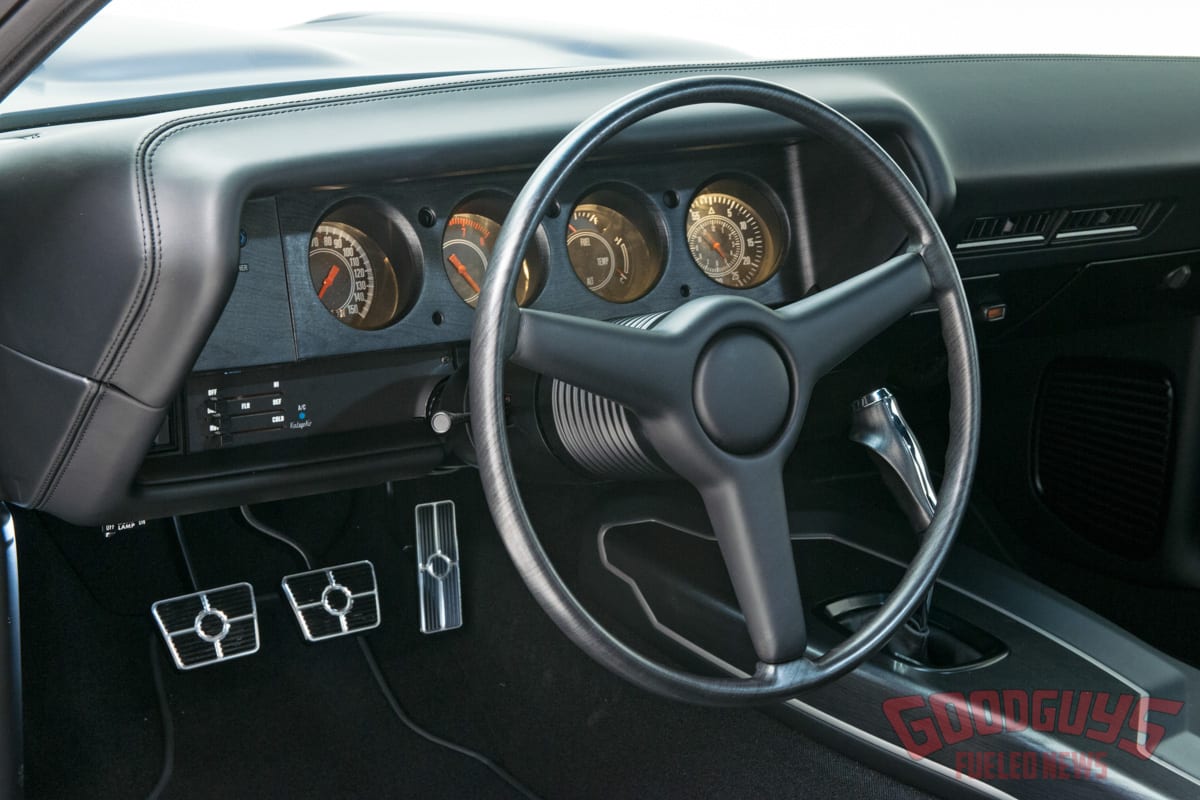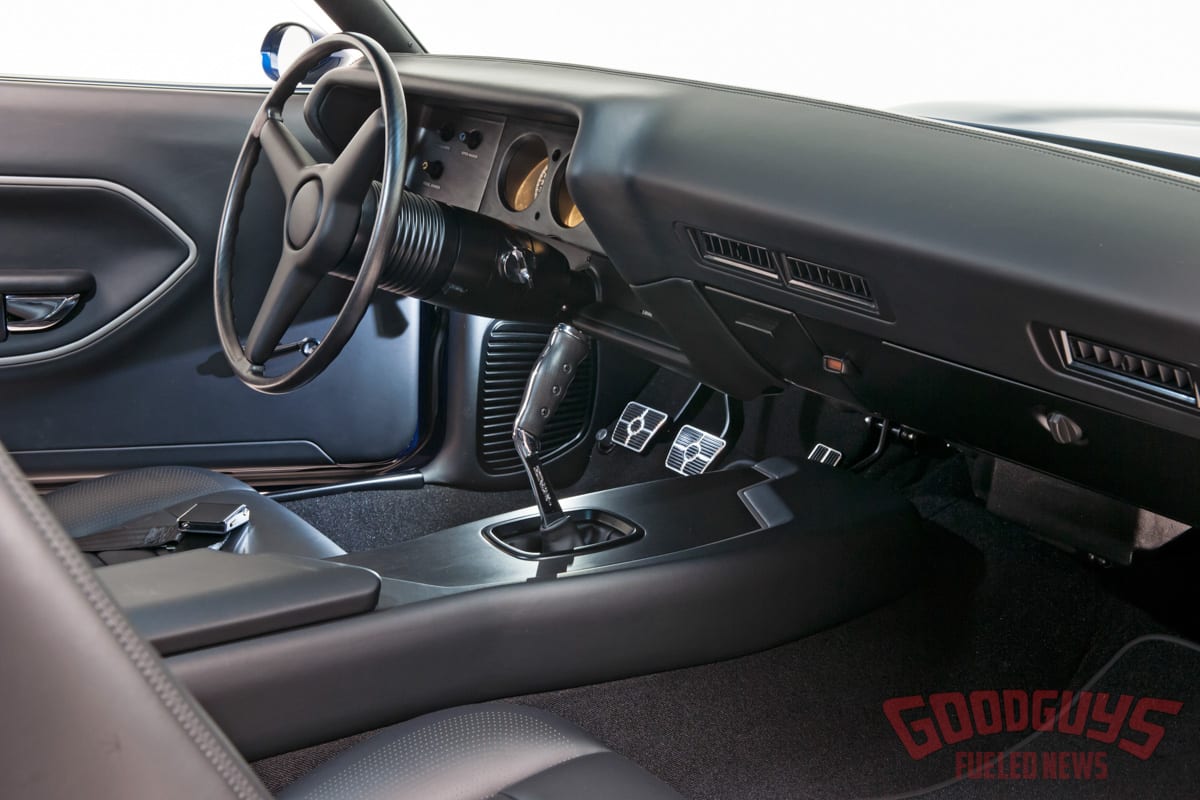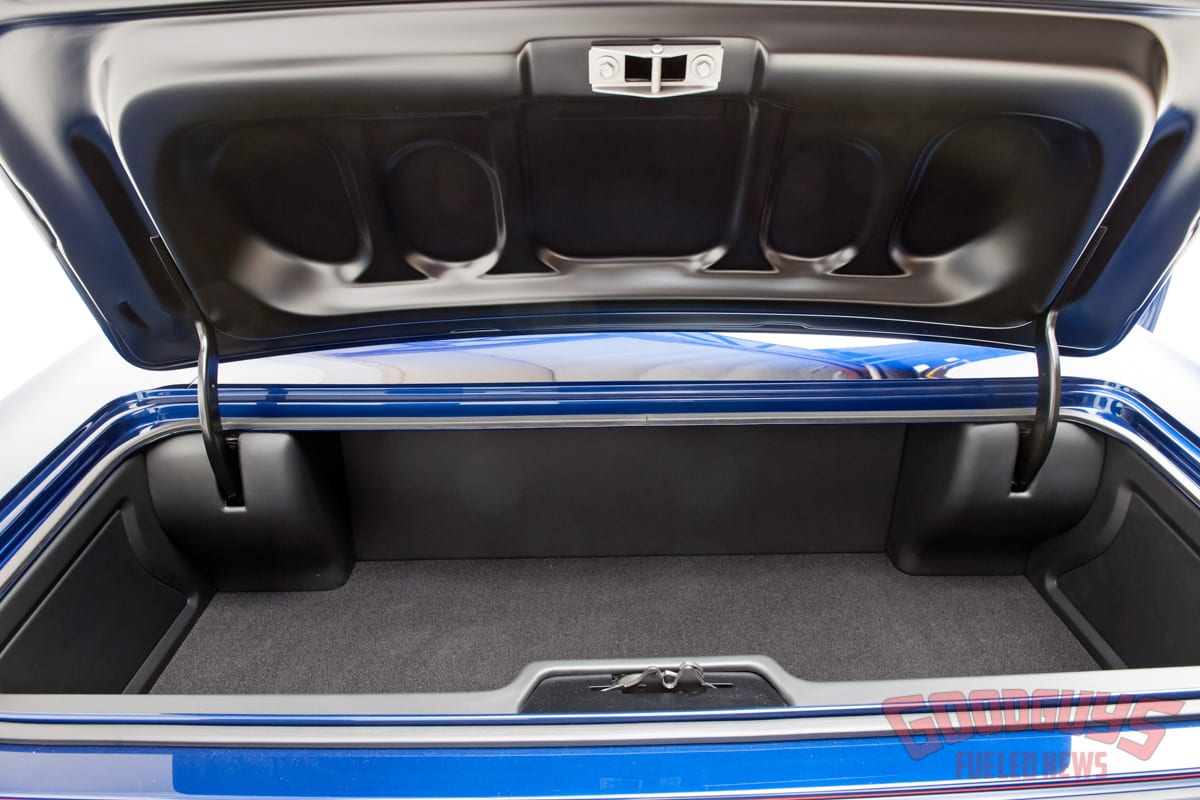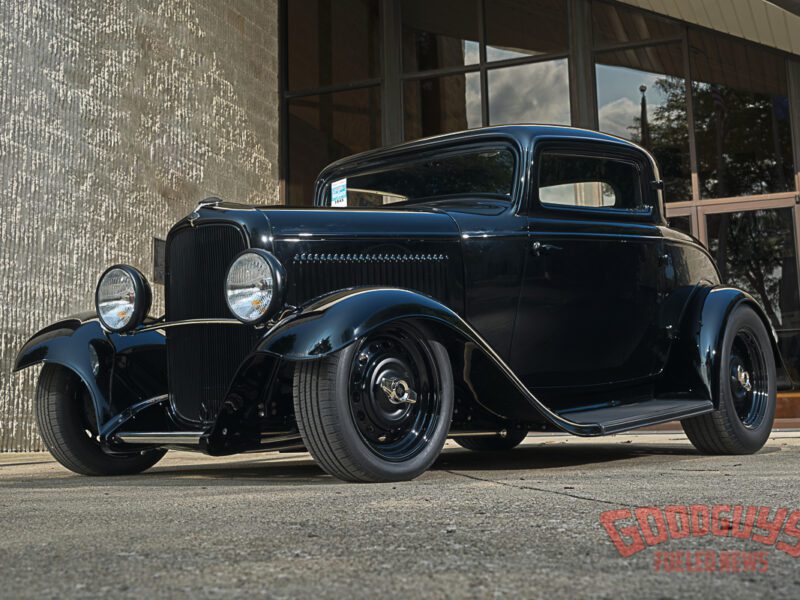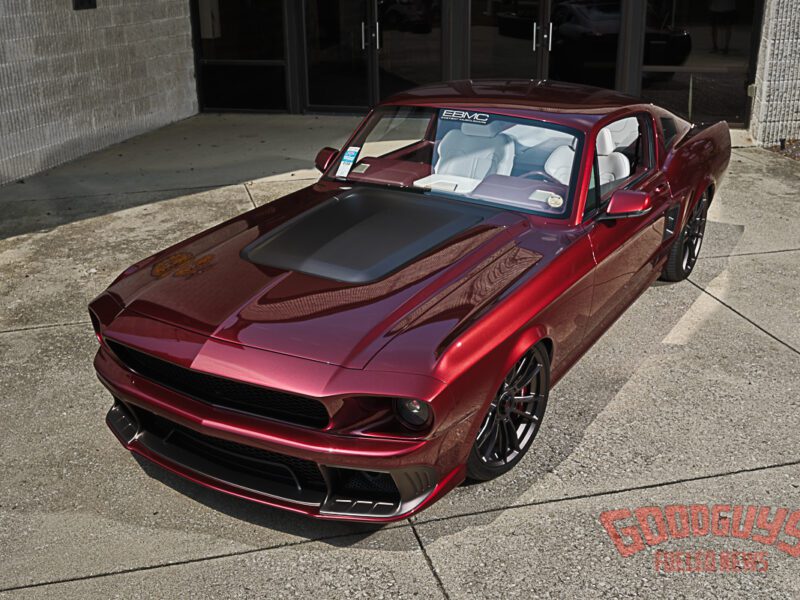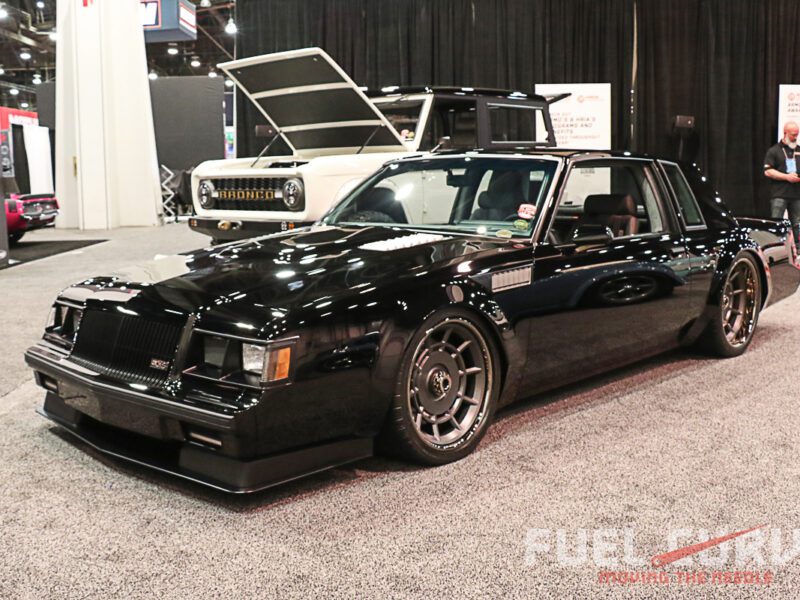e440 – A Classic ’Cuda with European Influence and Modern Flair
The modified muscle car spectrum has grown pretty broad over the past decade. On one end you have lightly modified restorations updated with a few well-chosen parts like custom wheels or aftermarket disc brakes. On the other extreme you’ve got ultra-modern, over-the-top creations crafted from the ground up where nearly every piece is hand-formed from carbon fiber, custom machined, or computer-designed and 3D printed.
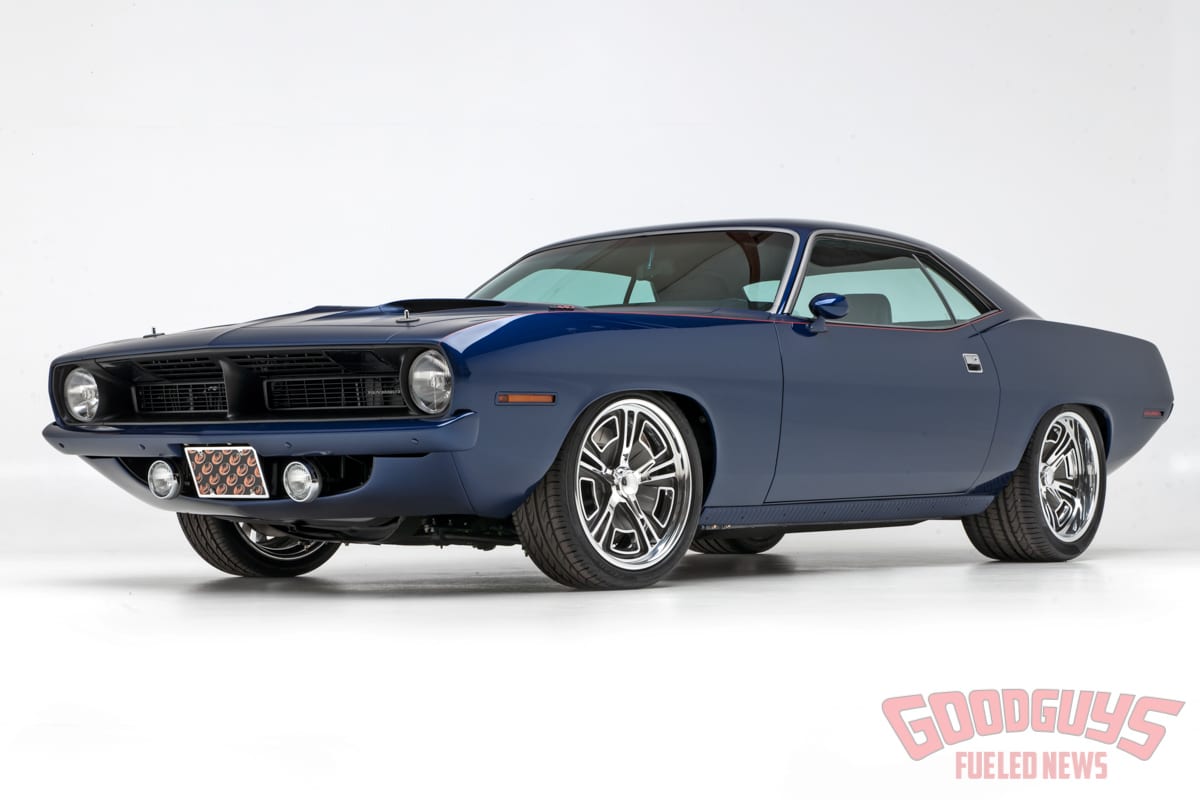
Making a strong statement in the middle of this continuum can be a challenge, but it’s exactly what Kevin and Gabrielle O’Neil have done with this ’70 ’Cuda built by Cotati Speed Shop. The Brilliant Blue Mopar has been enhanced with performance updates that make it a fun, modern driver and aesthetic enhancements that give it a refined, distinctive presence, all while retaining enough vintage flavor to maintain its classic muscle car charm.
The O’Neils met Zane Cullen and the Cotati team when the shop was doing some work on Gabrielle’s father’s ’68 Charger – a car her family has owned since new. During visits to the shop, Kevin and Gabrielle mentioned they’d be interested in a ’Cuda if the right car came along.
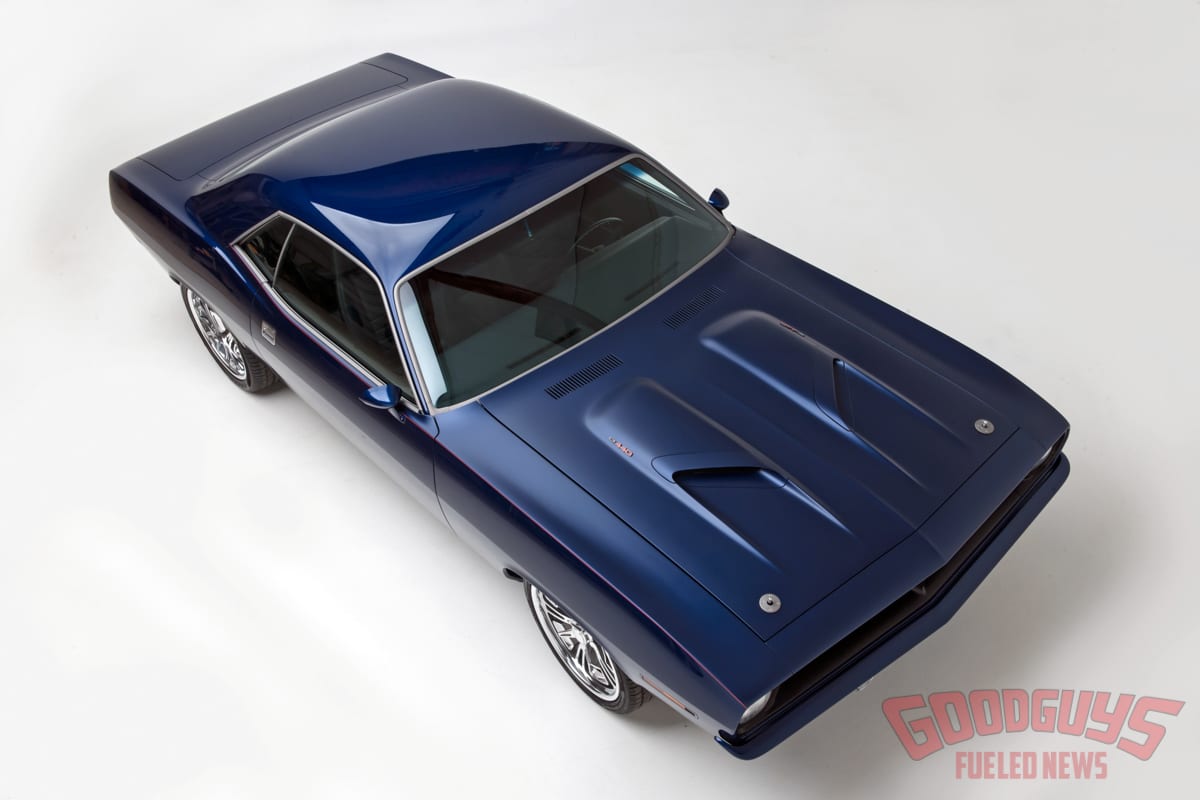
“A few months later, this ’Cuda kinda surfaced through a guy who works here,” Zane says. An original 440/four-speed car, the ’Cuda was someone else’s abandoned project.
“This literally was a car in a barn,” Kevin says. “The original owner had had plans to make it a dragster, but lost interest in the project. When we purchased the car, it had the original 440, but no transmission. The body was relatively straight, but in rough condition.”
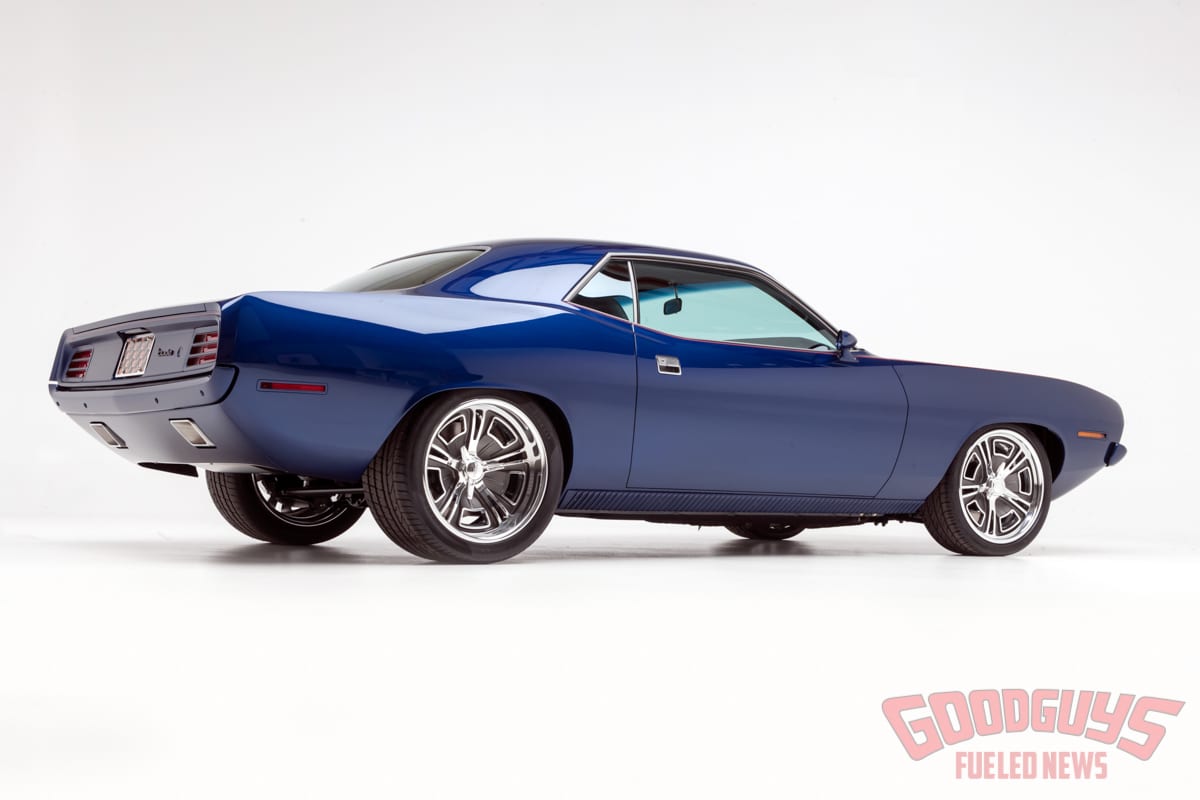
The previous owner’s quarter-mile plans meant the car already had a pair of widened rear wheel tubs installed. It also came with a collection of drag-oriented parts, including a Mark Williams Dana 60 rear axle. Redirecting the build toward a more balanced restomod path began with updating the front suspension using QA1 control arms, a Hotchkis sway bar, JRi shocks, and a Firm Feel steering box. The Mark Williams rearend was retained but suspended using a Detroit Speed QuadraLink rear suspension with JRi coil-overs. Wilwood 14-inch disc brakes were added at each corner, combined with six-piston front and four-piston rear calipers.
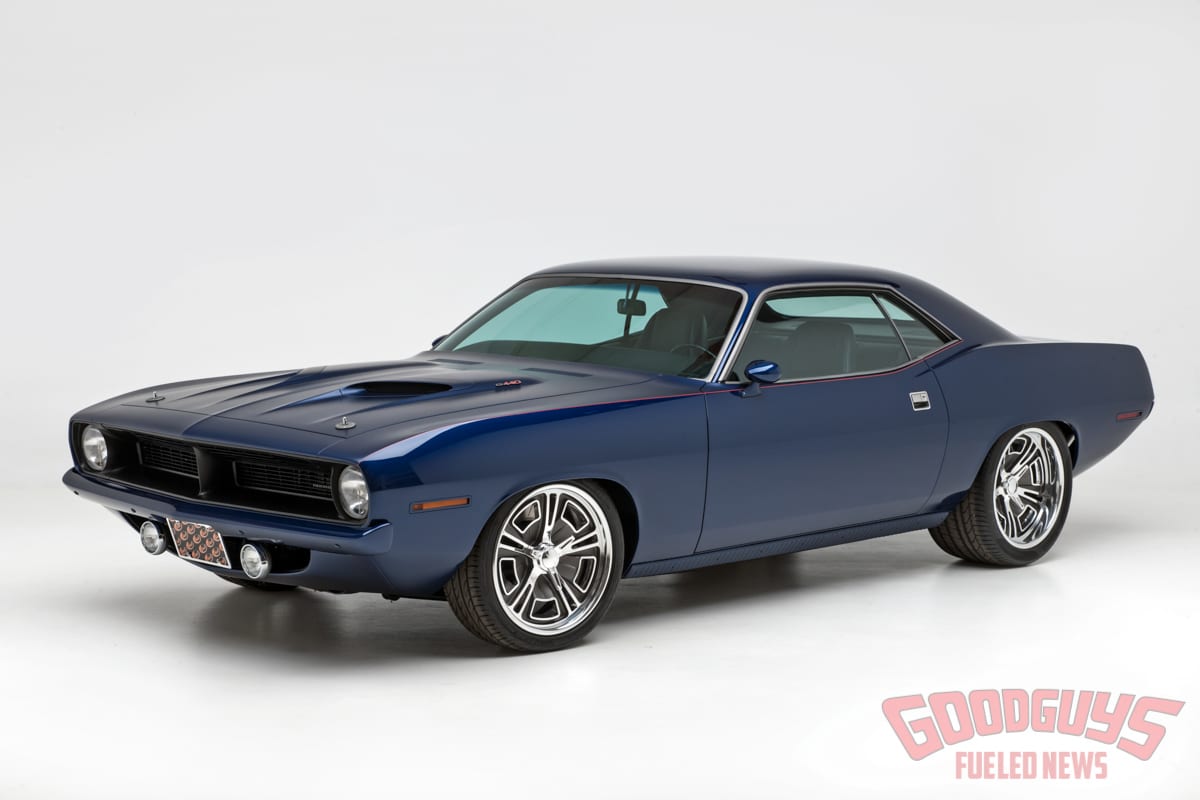
The original 440c.i. big block was retained for the project and rebuilt by expert Jim Foley using Edelbrock heads, an MSD ignition, a Billet Specialties TruTrac accessory drive system, and a Holley Sniper EFI setup. The missing four-speed was replaced with a Tremec T56 six speed using a McLeod clutch and original-style Hurst pistol grip shifter.
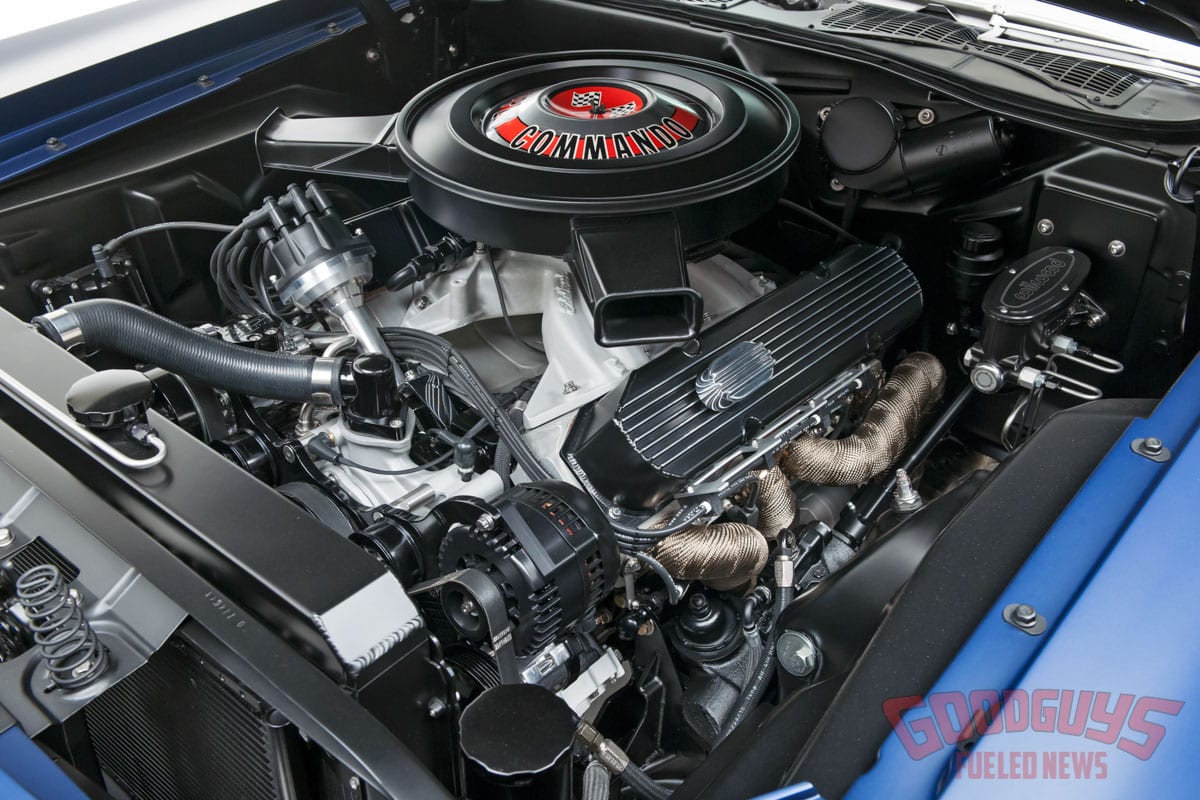
Unlike some modern builds that conceal the engine under custom paneling, the goal with the ’Cuda was to maintain a refined OEM feel under the hood. This included using an original air cleaner and a variety of black and polished finishes. “You open the hood and you can still see the engine, the mechanicals,” Kevin says. I think it actually takes more talent to make it look pretty when everything is still there.”
A vision for the finished car began to evolve during the multi-year project. Zane says he has long felt the ’Cuda design had a little more European flair than its Mustang or Camaro competitors, but that it fell short of its potential with low-cost, mass produced details, especially inside. Drawing on Chrysler’s long history of using Italian design houses for concept vehicles, Zane had a thought: “What if Plymouth sent this car to Pininfarina in 1970?” he asked. What would it have looked like if they had eliminated the cheaper elements and refined the entire package?
That design idea guided one key element in the car’s appearance – the 19×8- and 19×12-inch Schott wheels. They were the closest production billet wheel they could find to match the wheel design of a Lambroghini Miura. Wrapped in Pirelli tires, the wheels provided both Italian-style flair and a more modern appearance.
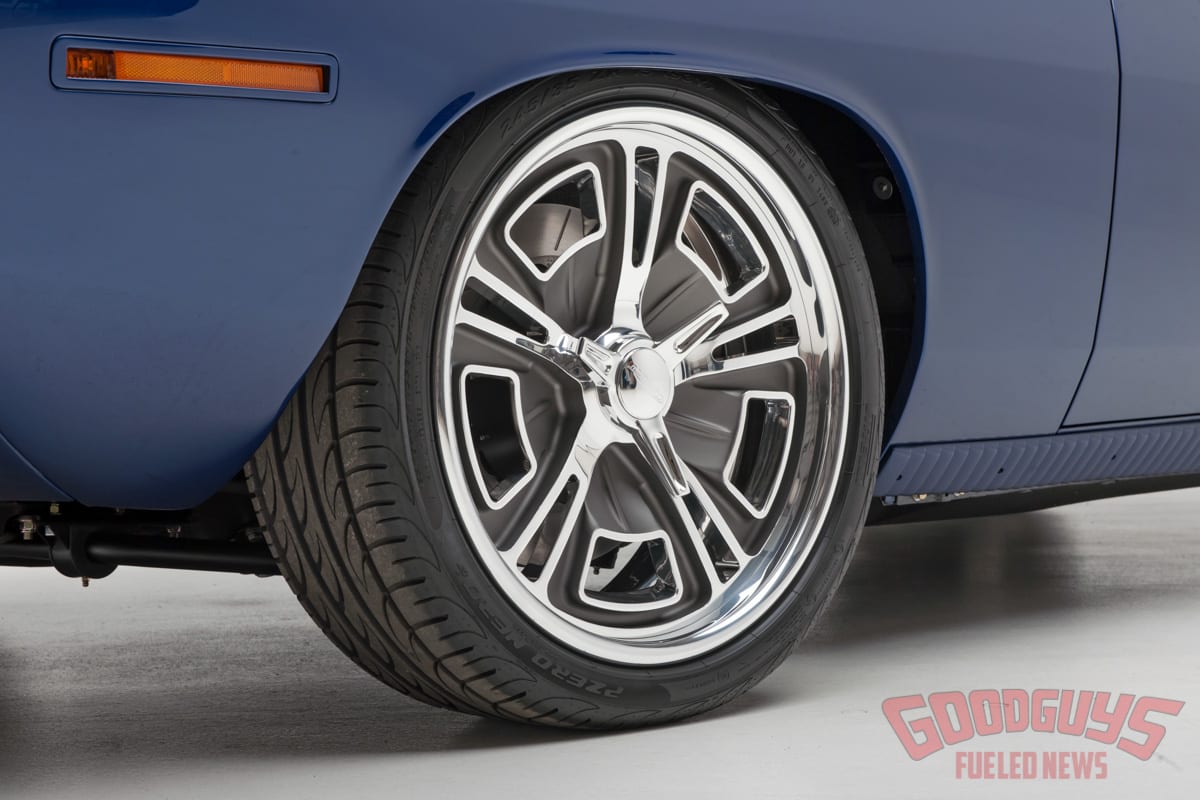
Other aesthetic refinements were much more subtle, like the sectioned and tucked front and rear bumpers, and the custom rear pan crafted by Dave Hitchinson, punctuated by exhaust tips from Greening Auto Company. Naturally, the Cotati team also tightened up all of the body gaps and aligned them to a show-quality standard.
The car’s paint has draws on elements that are both modern and European – it’s a late-model Mercedes hue called Brilliant Blue, applied using Axalta materials. A matte finish on the hood and fender tops, separated with a thin orange stripe, brings in some classic muscle car flavor. “We kind of did our own spin on the AAR ’Cuda,” Zane says. “It creates a little bit of contrast – just a different touch.”
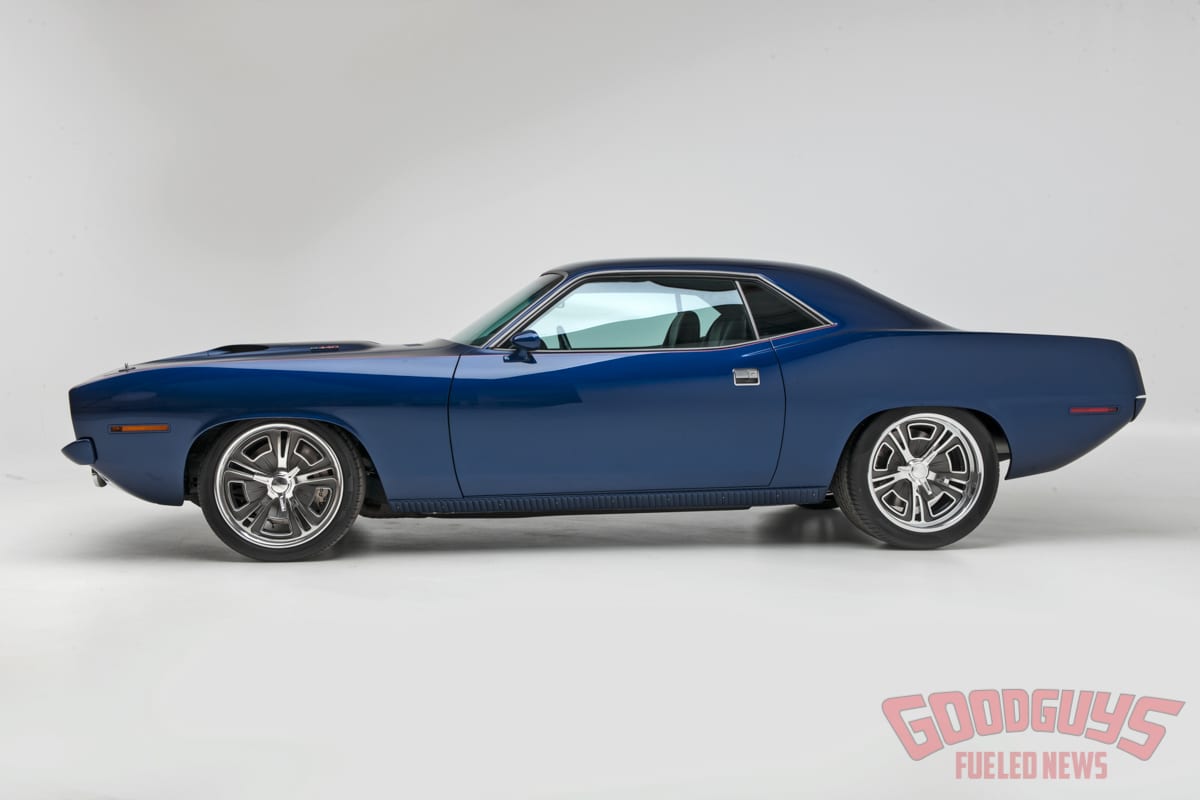
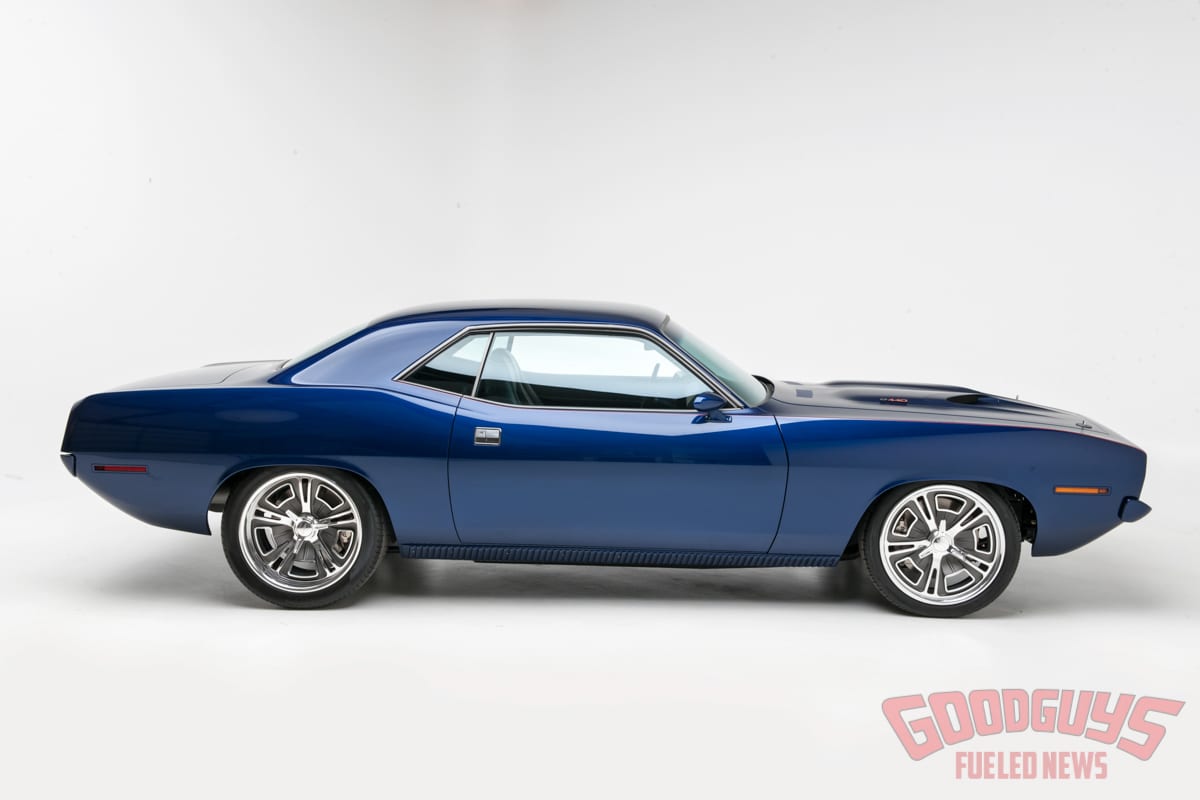
The refined, European flair was carried over inside, where DJ Designs stitched a combination of perforated and smooth Relicate leather over modified stock buckets and a custom rear seat. The dash and console were both modified, but in a way that looks stock, only better. Details like Classic Instruments gauges, Vintage Air climate controls, Billet Specialties pedals, and black woodgrain finishes add to the refined OEM feel.
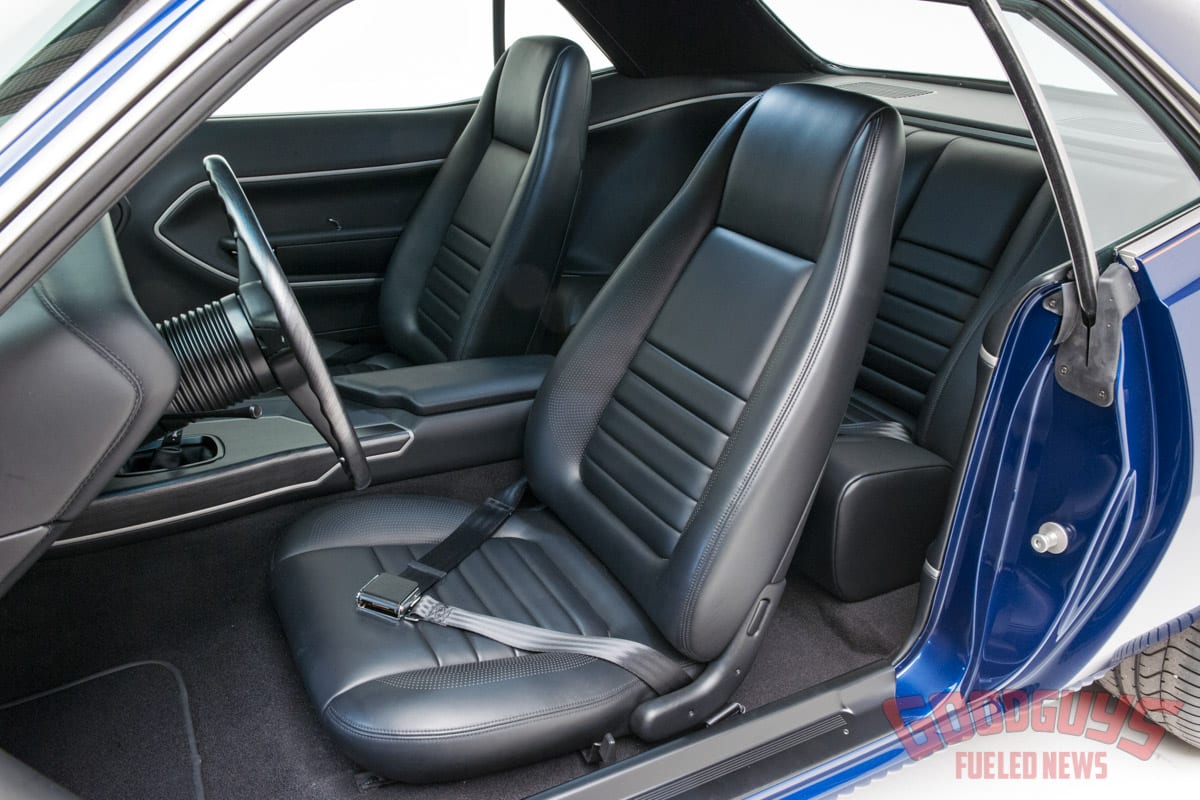
Dubbed the e440, the ’Cuda debuted at the 2019 SEMA Show in the Covercraft booth, complete with posters and model car boxes sporting custom artwork by Brian Stupski of Problem Child Kustoms. It was also showcased at the 2020 Grand National Roadster Show and is destined for many more events in 2021.
The finished ’Cuda seems to have found the balance that Kevin, Gabrielle, and Zane were seeking. “It was an exercise in restraint to have something that had a modern feel, but not lose the authenticity of what the car is,” Zane says.
Kevin agrees. “We never wanted to lose the appeal of the original car,” he says. “We didn’t want it to be a trendy car. It doesn’t lose the sense that it’s still a ’Cuda.”
Photos by Mike Chase

